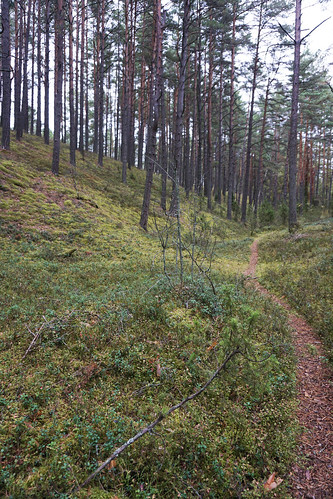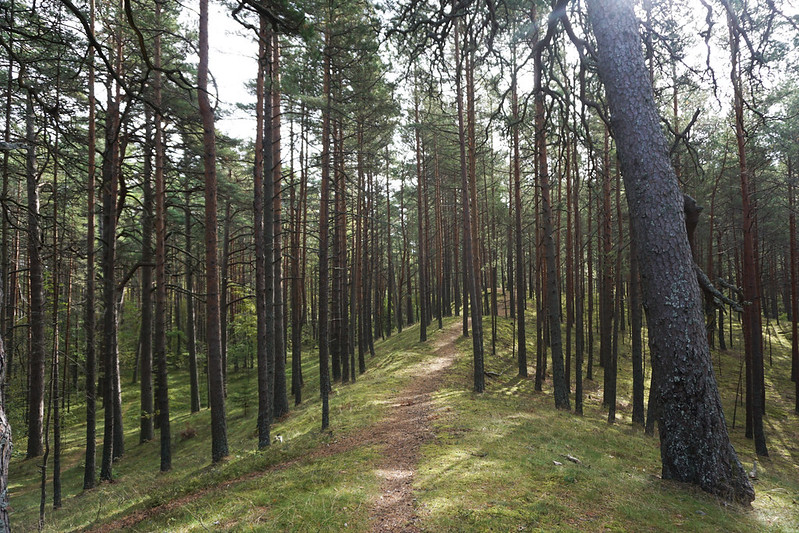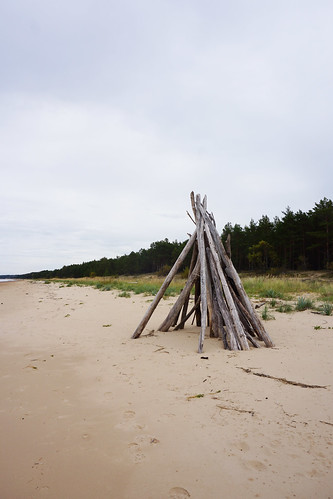Hiking Latvia: Lilaste to Saulkrasti
Sandy beaches stretching endlessly in both directions. Wooden staircases built up small hills into pine forest. Thin red pathways weaving between trees slightly tilted, as if they’re perpetually leaning away from the winds that come in from the coast.
This fall, I took a couple weeks off from work and made my way on foot up the Latvian coast from Riga and across the border into Estonia.
The landscapes charmed me and made all the times I got lost or underestimated my walking time very much worth it.
And one of my favorites stretches of hikeable coastline was this one: from the small lakeside hotels of Lilaste to the well-kept coastal trail system of Saulkrasti.


Google says the route should take about three hours, but I’d plan on more like five. For the most part, it’s easy to switch things up, walking sometimes on the sandy shore and sometimes through the quiet pine forest with its soft, almost bouncy trails.
Once you reach the Saulkrasti area, the trails will be well-marked and easy to follow. Before that, you’ll want a map or at least a compass. The pine forest near Lilaste is full of trails and none of them marked.













(Psst, this post may contain affiliate links, which means if you purchase something through one of my links, I get a commission at no extra cost to you.)
Want to experience the hike for yourself? Here are some relevant details:
Hiking times and local transportation
The train from Riga to Lilaste takes about 45 minutes.
The trails from Lilaste are not well marked, as I mentioned above, so a map is recommended (or a compass at the very least, which could get you down to the beach where you can follow the coastline). The full hike will probably take around five hours.
Dogs on trails
We were walking in the off-season, so I didn’t see many other people on the trails, but we did see plenty of dog footprints in the sandy areas and nary a no-dogs sign in sight.
Is the trail crowded?
No. Again, this was off season, so it’s possible some of these beaches would be less abandoned in summer. But the overall route should be fairly quiet.
What to bring
The hike is a level, relatively easy one, but it’s also long. Wear sturdy shoes, as trails are sometimes uneven, especially in the pine forest that borders the ocean (where trails are partly dirt and partly sand that shifts underfoot) and especially near Lilaste. I did the hike in a pair of sturdy, waterproof work boots.
Coastal weather here can get windy or rainy, especially in off season. I hiked this route in late September and needed a winter coat. I also carried serious rain gear for both myself and Luna.
There are no water fill-up stations along the way. Bring plenty of water.
Finally, this hike is incredibly pretty, so don’t forget your camera. All the photos above were taken with my Sony a6000.
Happy hiking!

Martins
Hi! I’m glad you enjoyed Latvian coastline. Let me suggest you also visit the stretch between Saulkrasti up north to Ainaži, there is much more diversity there! Stones, large boulders, sandstone cliffs and even small caves are all to be found between Tūja and Salacgrīva, as well as lots of endless sandy beaches along the way. But even further north around Salacgrīva and Ainaži there is a totally different coastline – coastal meadows with vegetation and something like a swamp that continues right into the seawater! Another nice coastal region is on the opposite side of the same Gulf of Riga – Kurzeme (Courland) coast stretch somewhere between Roja and Mērsrags with boulders, coastal meadows and super long sandy beaches again. I am also surprised you used the word ocean – Latvians call it the small sea, because our big sea is the open Baltic sea we have from the Lithuanian border in the south up to cape Kolka. The big sea has endless beaches, too, the most famous being that of the city of Liepāja – very, very soft, white, fine sand of the central beach and also the wild beach of Karosta, former secret military town, where you can see ruins of old fortresses washed into the sea, colourful pebbles and also some small sandstone cliffs. Last but not least – the highest section of coastal sand cliffs is in Jūrkalne. So, welcome back! 🙂